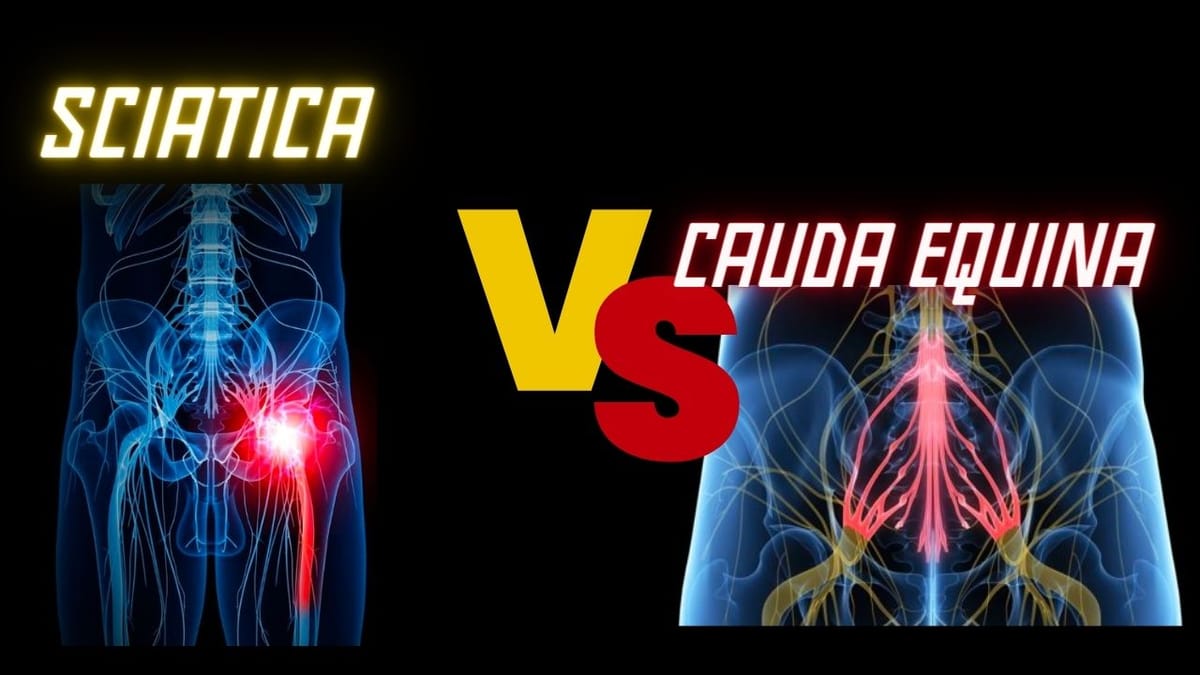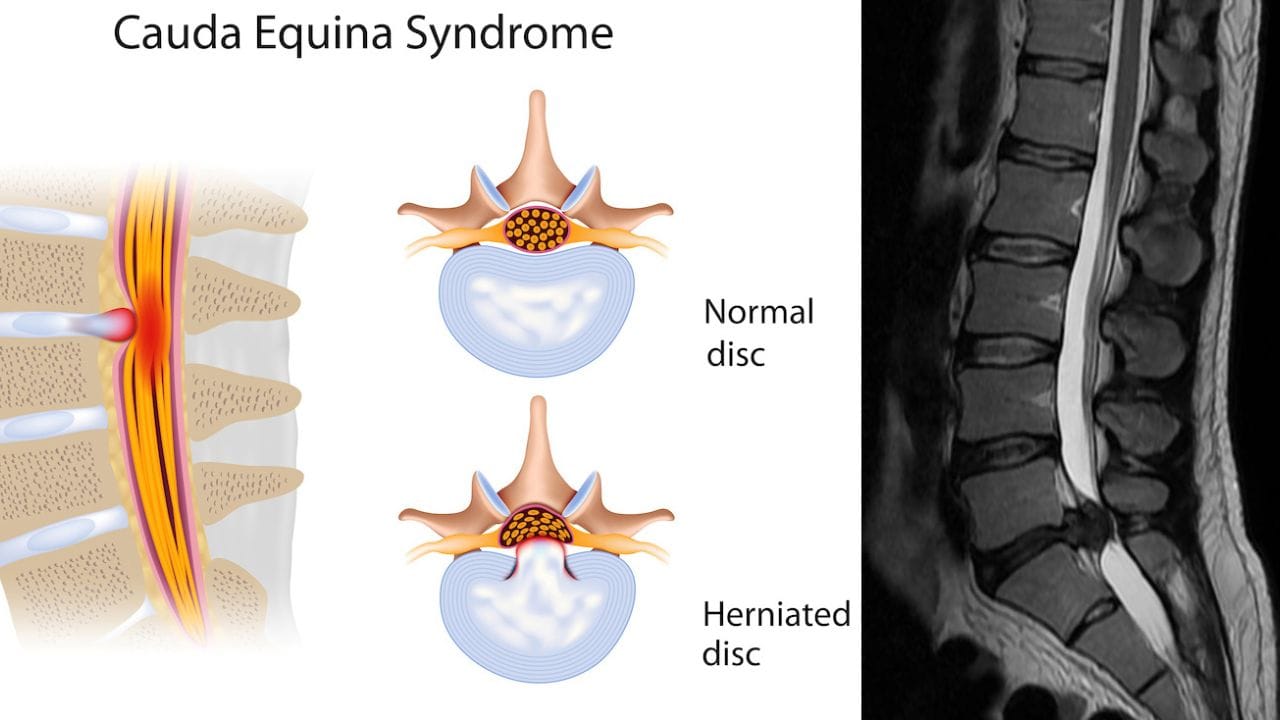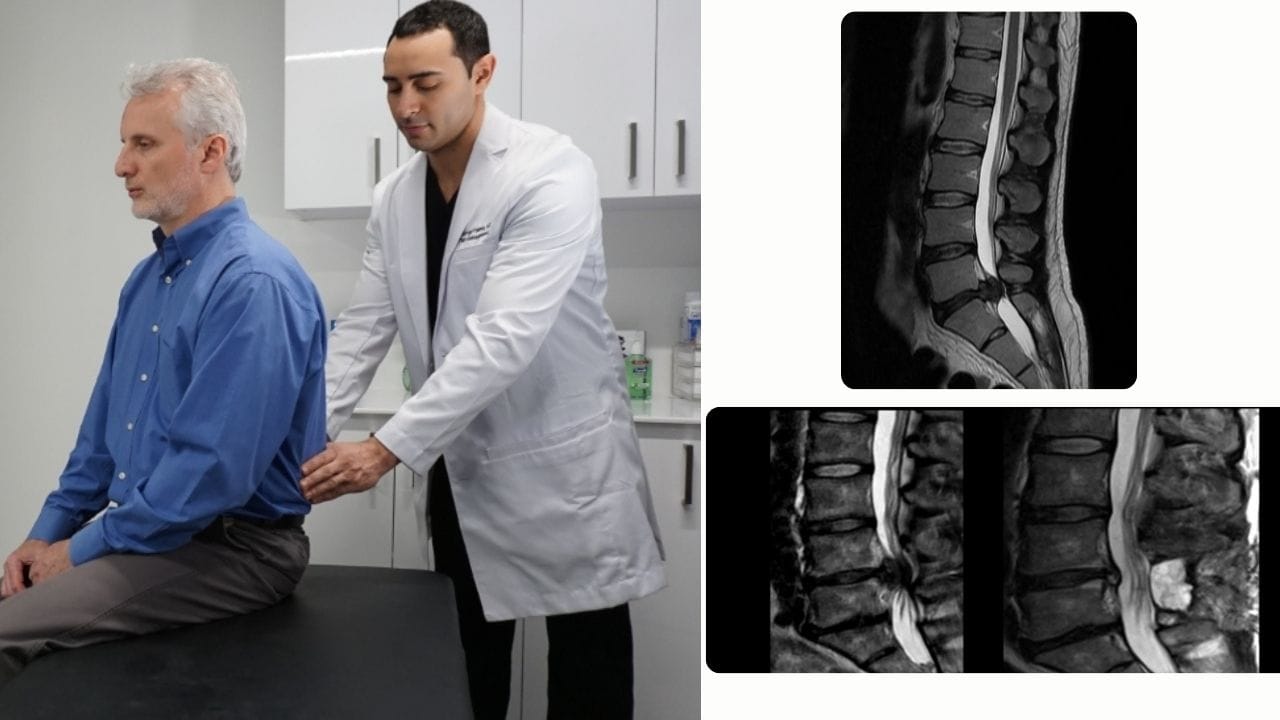Cauda Equina vs Sciatica
While Sciatica is often manageable with conservative measures, Cauda Equina Syndrome demands immediate attention due to its potential for severe neurological consequences. Understanding the nuances between these conditions is paramount for timely intervention and effective care.

Back pain can be more than just an inconvenience; it can be a sign of serious health issues. Two conditions often confused due to their similar symptoms are cauda equina syndrome and sciatica.
Cauda equina syndrome and sciatica are both conditions that affect the lower back and legs, but they have different causes and levels of severity. Cauda equina syndrome is a rare but serious condition that requires immediate medical attention to prevent permanent damage.
Sciatica is more common and often treatable with non-surgical methods, but understanding its symptoms is key to managing the condition effectively.
While both affect the lower back and legs, they are distinct in their causes, severity, and treatment approaches.
This article will delve into the nuances of cauda equina vs sciatica, helping you understand the differences and what to watch out for.
What is Cauda Equina Syndrome?
Cauda equina syndrome (CES) is a rare but serious condition that occurs when the nerve roots at the lower end of the spinal cord, known as the cauda equina, become compressed and disrupted.
This can lead to severe lower back pain, loss of sensation in the buttocks, genitalia, and thighs, and some cases, bladder and bowel dysfunction.

The causes of CES can include a herniated disc, spinal stenosis, a spinal lesion or tumor, or trauma to the lower back.
Immediate medical intervention is crucial for cauda equina syndrome. If left untreated, the condition can result in permanent paralysis, loss of bladder and bowel control, and other long-term complications. Surgery is often required to relieve the pressure on the nerves.
Symptoms
Cauda Equina Syndrome is not easy to figure out, so doctors need to be really careful when they see these signs:
- Trouble controlling pee or poop - like not being able to hold it in, not being able to go at all, or having trouble pooping.
- Pain, numbness, or weakness in both legs.
- Strong pain in the lower back.
- Suddenly not being able to perform sexually without a clear reason.
- Losing feeling or feeling different in your legs, butt, inner thighs, the back of your legs, or feet - and it's pretty bad or keeps getting worse.
What is Sciatica?
Sciatica, on the other hand, is a more common condition that occurs when the sciatic nerve, which runs from the lower back down to the feet, is irritated or compressed.

Symptoms include pain that radiates along the sciatic nerve path, numbness, tingling, and muscle weakness in the leg or foot.
The pain can vary from a mild ache to a sharp, burning sensation or excruciating discomfort.
Sciatica can be caused by a herniated disc, bone spurs on the spine, or narrowing of the spine (spinal stenosis) that compresses part of the nerve.
Unlike cauda equina syndrome, sciatica is often treated with non-surgical methods such as physical therapy, medications, and exercises.
Symtoms
Sciatica can cause different kinds of discomfort. The most common sign is a sharp pain that starts in the lower back and shoots down the leg. Other things you might feel with Sciatica:
- Pain on one side of the buttock or leg, not usually on both sides.
- The pain starts in the lower back or buttock and goes down the back of the thigh into the lower leg and foot.
- The pain may get better when lying down or walking but worse when sitting or standing.
- People often describe the pain as sharp, like an electric shock.
- You might also feel a "pins-and-needles" sensation, numbness, or weakness in the leg.
- It can be hard to stand up or walk because of severe or shooting pain in one leg.
- Sometimes, there might be pain or other feelings in the toes, depending on where the sciatic nerve is affected.
- Lower back pain might be there too, but usually not as bad as the pain in the leg.
Managing Symptoms
Sciatica symptoms can often be managed at home. Applying heat or ice packs to the affected area, engaging in gentle stretching exercises, and taking over-the-counter pain relievers can help alleviate discomfort.

It's important to stay active and avoid prolonged sitting or lying down when dealing with sciatica.
However, activities should be resumed gradually and with caution to avoid aggravating the condition.
Causes and Risk Factors
The causes of cauda equina syndrome and sciatica are rooted in spinal issues but differ in specifics.
CES is often the result of a severe rupture of a disc in the lumbar region, leading to significant nerve compression.
Other causes include spinal lesions and tumors, severe spinal stenosis, and infections or inflammatory conditions that affect the spine.
Sciatica is commonly triggered by a lumbar herniated disc or bone spur that presses on the nerve.
Risk factors for developing sciatica include age-related changes in the spine, obesity, prolonged sitting, diabetes, and occupations that involve heavy lifting or twisting of the back.
Diagnosis and Medical Imaging
Diagnosing cauda equina syndrome requires a thorough medical history and physical examination, followed by urgent imaging tests such as MRI or CT scans to confirm the diagnosis and pinpoint the location of the nerve compression.
Myelograms and electromyography (EMG) may also be used to assess nerve function.

For sciatica, a physical exam is often sufficient to diagnose the condition based on pain distribution and nerve function.
However, if symptoms persist or worsen, imaging tests like MRI, CT scans, or X-rays may be recommended to determine the underlying cause of nerve compression.
Red Flags
The red flags associated with sciatica and Cauda Equina Syndrome that doctors should closely monitor for early identification and prompt intervention.
Understanding these warning signs is essential for healthcare professionals in providing timely and effective care for patients experiencing lower back issues.
Sciatica Red Flags
- Pain that starts in the lower back and radiates down the leg
- Pain when standing or sitting
- Numbness in the legs
- Weakness or numbness when moving a leg or foot
Cauda Equina Syndrome Red Flags
- Severe back pain
- Saddle anesthesia
- Bowel or bladder incontinence or retention
- Sexual dysfunction
- Fever
- Persistent pain
- Unexplained weight loss
Treatment Options
Treatment for cauda equina syndrome is a medical emergency. Surgery is typically performed within 48 hours of symptom onset to prevent irreversible nerve damage. Post-surgery, physical therapy, and medications may be prescribed to aid recovery.
Sciatica treatments aim to relieve pain and address the underlying cause. Options include pain relievers, anti-inflammatory drugs, muscle relaxants, physical therapy, and in some cases, steroid injections.
Surgery may be considered if conservative treatments fail and the pain is severe or debilitating.
Summary
Cauda equina syndrome and sciatica are conditions that can cause significant discomfort and impact quality of life. Understanding the differences between the two is crucial for seeking appropriate treatment. Cauda equina syndrome is a medical emergency that requires immediate surgical intervention, while sciatica can often be managed with non-surgical treatments. Recognizing the symptoms and knowing when to seek medical help can improve outcomes and prevent long-term complications.
FAQ Section
Q 1: What is the Distinction Between Cauda Equina Syndrome and Sciatica?
A: Cauda Equina Syndrome (CES) and Sciatica both involve lower back issues, but they are distinct conditions. Sciatica is a symptom caused by compression or irritation of the sciatic nerve, often due to spinal issues like herniated discs.
On the other hand, Cauda Equina Syndrome is a rare but serious condition where the bundle of nerves at the base of the spine (cauda equina) is compressed, potentially leading to severe neurological issues.
Q 2: What are the Telltale Signs and Symptoms of Cauda Equina Syndrome and Sciatica?
A: While both conditions may cause lower back pain, sciatica usually involves radiating pain down one leg, along with numbness and tingling.
In contrast, Cauda Equina Syndrome presents with more severe symptoms such as loss of bladder or bowel control, saddle anesthesia, and lower extremity weakness. If you experience any of these red-flag symptoms, seek immediate medical attention.
Q 3: Why is Prompt Medical Attention Essential for Cauda Equina Syndrome and Sciatica?
A: Early diagnosis and intervention are vital, especially in the case of Cauda Equina Syndrome. This condition can lead to permanent neurological damage if not treated promptly. If you are experiencing severe or sudden-onset symptoms such as loss of bowel or bladder control, seek emergency medical care.
While sciatica is generally less urgent, persistent or worsening symptoms should also prompt a visit to a healthcare professional for accurate diagnosis and appropriate management.
